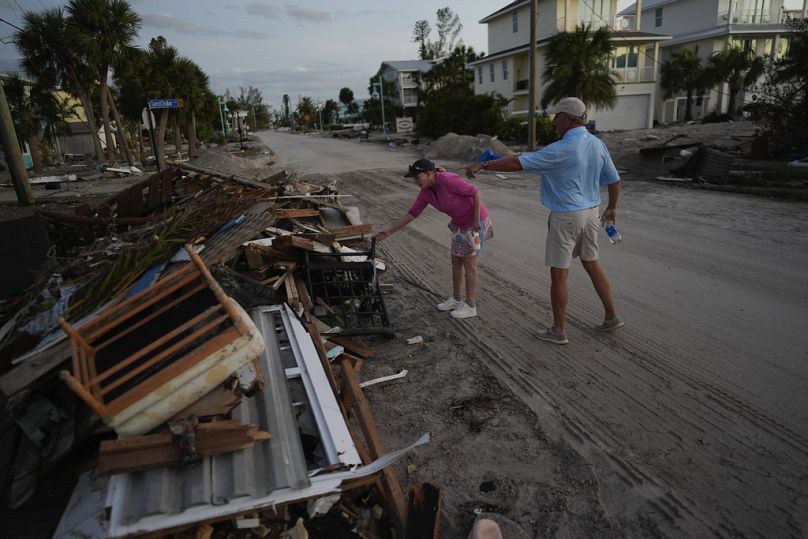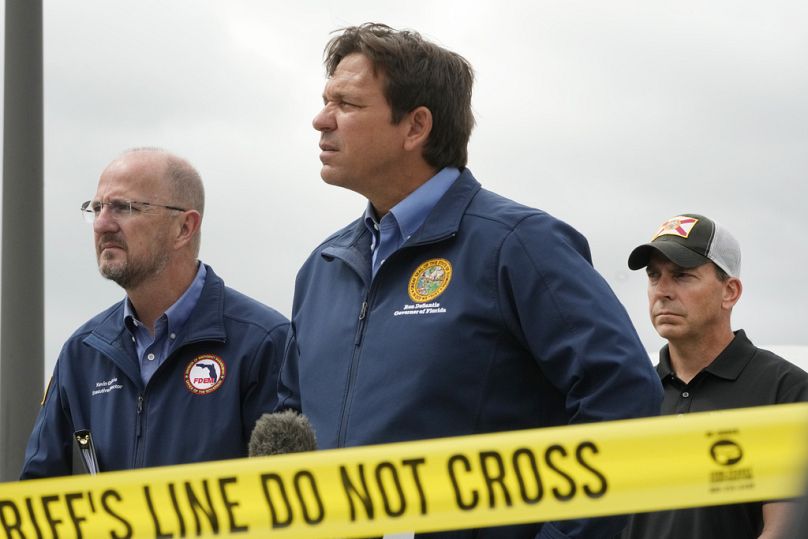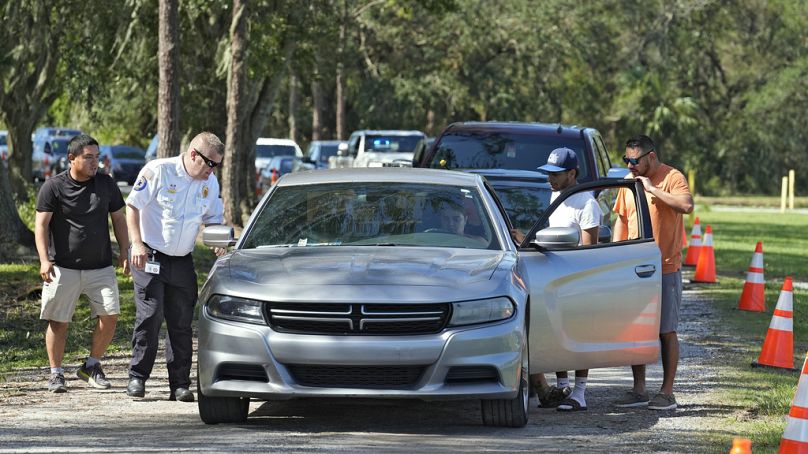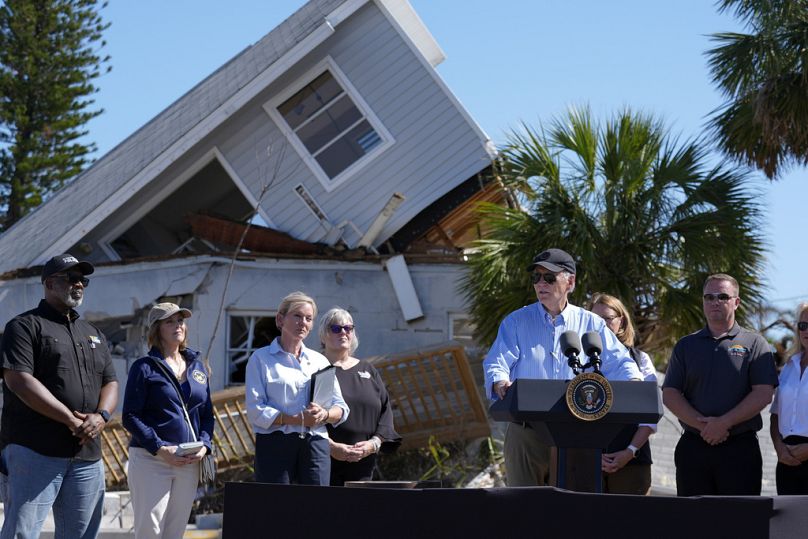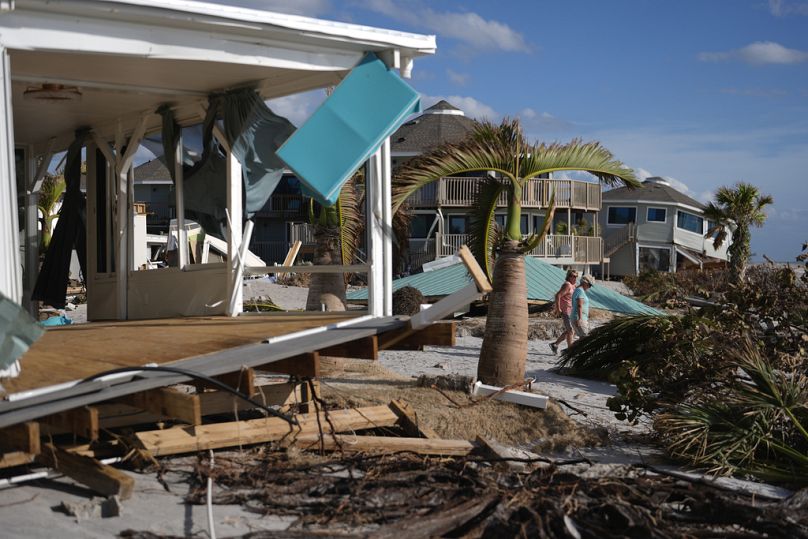Hurricane Milton costs Florida billions in damage and wreaks havoc on countless lives
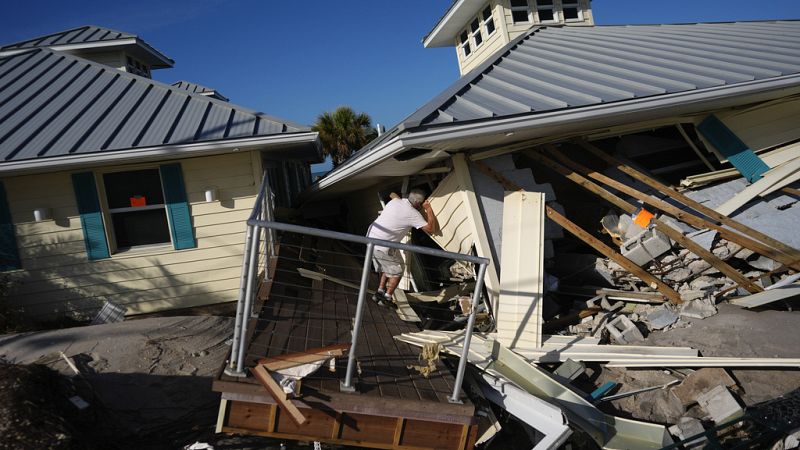
Recovery efforts are continuing in central Florida, as the devastation caused by Hurricane Milton becomes clear.
On Sunday, President Joe Biden surveyed the devastation, saying he was thankful the damage from the storm was not as severe as officials had anticipated. He did, however, make clear that it was very much a “cataclysmic” event for people caught in Milton’s path, which has been blamed for at least 11 deaths and is strongly indicative of a worsening climate crisis.
Days after the storm hit, 500,000 homes and business in Florida remain without electricity, according to Poweroutage.us, and fuel shortages are ongoing.
While recovery efforts are gaining steam, experts warn that a full rebound will take far longer.
What is involved in the recovery efforts in storm-hit Florida?
Florida’s governor Ron DeSantis has cautioned that debris removal could take up to a year, despite the fact that Florida authorities have dispatched nearly 3,000 workers to the cleanup.
Despite rarely agreeing with Joe Biden, DeSantis also confirmed that the President has approved 100 per cent federal reimbursement for those efforts for at least 90 days.
“The (removal of) debris has to be 24/7 over this 90-day period,” DeSantis said while standing next to a pile of furniture, lumber and other debris in Treasure Island, an island city near St. Petersburg that has been battered by both Hurricane Milton and Helene which hit just a few weeks before.
Milton made landfall as a Category 3 storm, tearing across the centre of the state, flooding barrier islands and spawning deadly tornadoes. Officials say the toll could have been worse if not for the widespread evacuations.
Overall, more than a thousand people had been rescued in the wake of the storm as of Saturday, DeSantis said.
National Weather Service meteorologist Paul Close said rivers will continue to rise for several days and result in flooding, mostly around Tampa Bay and northwards. Those areas got the most rain, which came on top of a wet summer that included several hurricanes.
Meanwhile, countless residents unable to move back into their damaged homes are continuing to make other arrangements - although it hasn’t been easy for many.
Many Floridians journeying home after fleeing hundreds of miles to escape the storm, spent much of the weekend searching for gas as a fuel shortage gripped the state.
In St. Petersburg alone, scores of people lined up at a station that had no gas, hoping it would arrive soon.
DeSantis told reporters on Saturday that the state had opened three fuel distribution sites and planned to open several more. The governor also announced that residents are entitled to 10 gallons (37.85 litres) each, free of charge.
“Obviously as power gets restored… you’re going to see the fuel flowing. But in the meantime, we want to give people another option,” he said.
Officials were also replenishing gas stations with the state's fuel stockpiles and providing generators to stations that remained without power.
How is the United States preparing for the rest of hurricane season?
On Sunday, President Biden surveyed hurricane damage on a helicopter flight between Tampa and St. Pete Beach on the Gulf Coast.
From the air, he saw the torn-up roof of Tropicana Field, home of the Tampa Bay Rays baseball team. On the ground, the president saw waterlogged household furnishings piled up outside flooded homes; other houses had collapsed.
Biden praised the first responders, some of whom had come from Canada.
"It's in moments like this we come together to take care of each other, not as Democrats or Republicans, but as Americans," he said.
Biden also announced $612 million (€560m) for six Department of Energy projects in hurricane-affected areas to bolster the region’s electric grid. That figure includes $47 million (€43m) for Gainesville Regional Utilities and $47 million (€43m) for Switched Source to partner with Florida Power and Light.
With a little more than three weeks before the presidential election, the hurricanes have added another dimension to the closely contested presidential race.
Republican nominee Donald Trump has said the Biden administration’s storm response was lacking, particularly in western North Carolina after Helene. Biden and Vice President Kamala Harris have criticised Trump for promoting falsehoods about the federal response.
Biden said Trump was “not singularly" to blame for the spread of misinformation - but that he has the "biggest mouth.”
“They blame me for everything. It's OK,” Trump told Fox News.
Biden has pressed for Congress to act quickly to make sure the Small Business Administration and the Federal Emergency Management Agency (FEMA) have the money they need to get through hurricane season, which tends to come to an end on 30 November in the Atlantic Ocean.
On Friday, he said that Milton alone had caused an estimated $50 billion (€45b) in damages.
On Saturday, Moody’s Analytics estimated that economic costs from the storm will be closer to $85 billion (€77b), including upwards of $70 billion (€64b) in property damage and an economic output loss of up to $15 billion (€13b).
Homeland Security Secretary Alejandro Mayorkas, whose department oversees FEMA, said the hurricane season is far from over and there are other natural disasters for which the agency must prepare.
“We don’t know what’s coming tomorrow, whether it’s another hurricane, a tornado, a fire, an earthquake. We have to be ready” Mayorkas told CBS.
As the recovery continues, Governor DeSantis has warned people to be cautious, citing ongoing safety threats including downed power lines and standing water.
How did climate change impact Milton?
Human-caused climate change gave a significant boost to Milton, intensifying the storm’s rainfall by 20 per cent to 30 per cent and strengthening its winds by about 10 per cent, scientists have announced.
World Weather Attribution researchers said that, without climate change, a hurricane like Milton would make landfall as a weaker Category 2, which is not considered a “major” storm, instead of a Category 3, which it was eventually categorised as.
Climate change also boosted Helene’s wind and rain. The two storms made an otherwise unusually quiet Atlantic hurricane season roar to life.
Scientists also warn that the season is far from over. So far, five hurricanes have made landfall in the US - and the record is six.
Jeff Masters, meteorologist for Yale Climate Connections, said the record may be matched since tropical cyclone activity is expected to be above-average for the rest of October and November.
Yesterday


